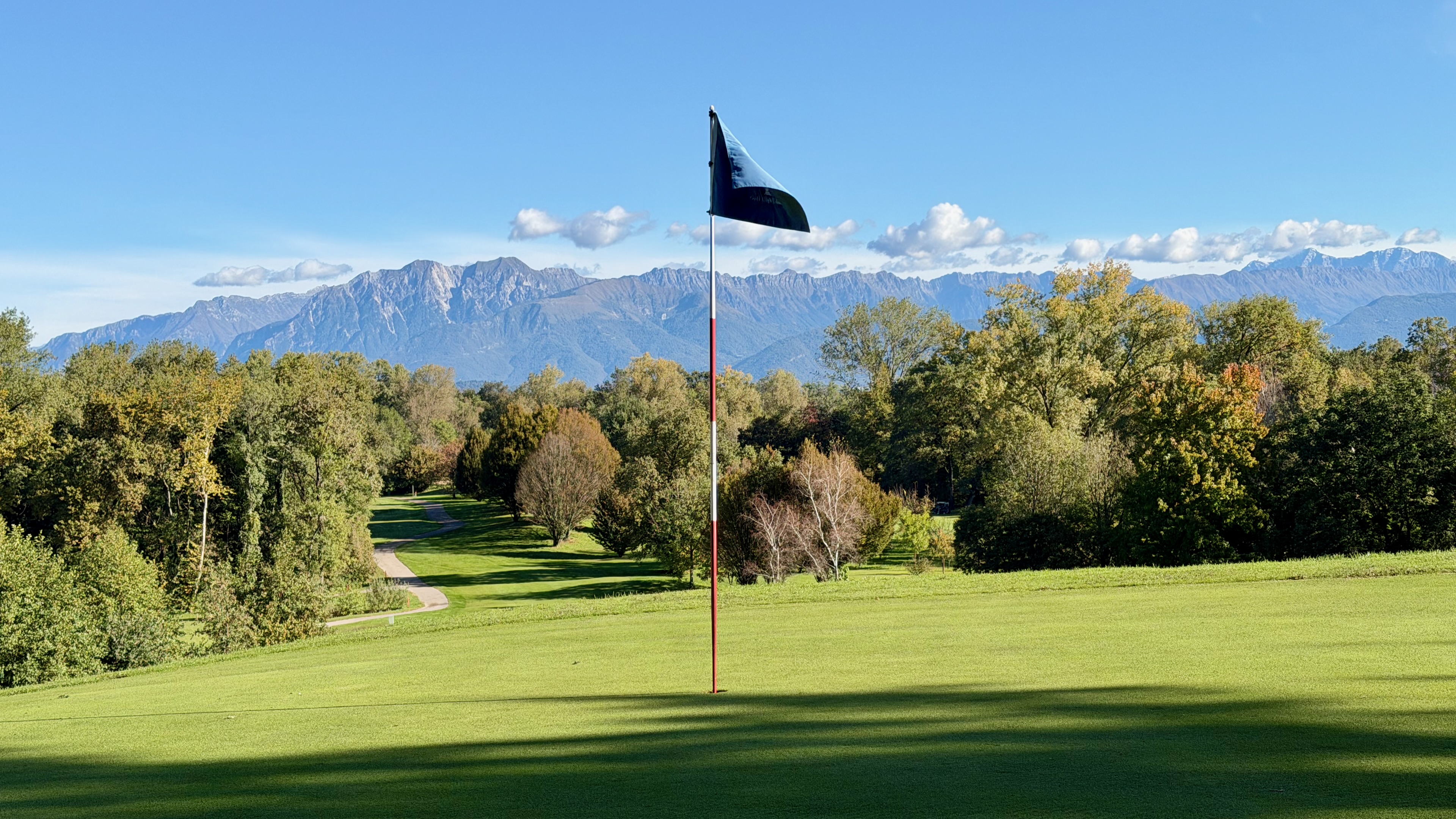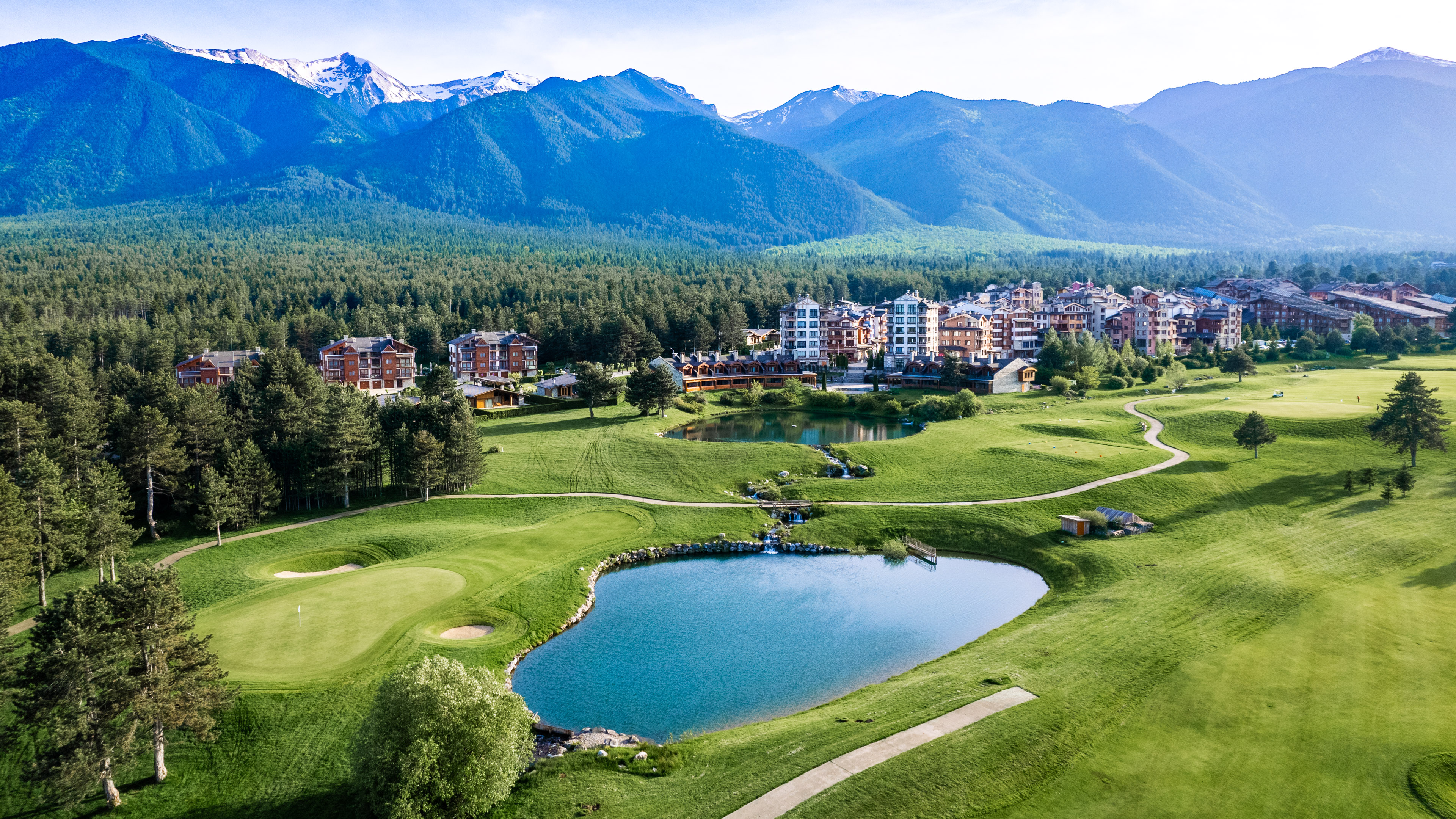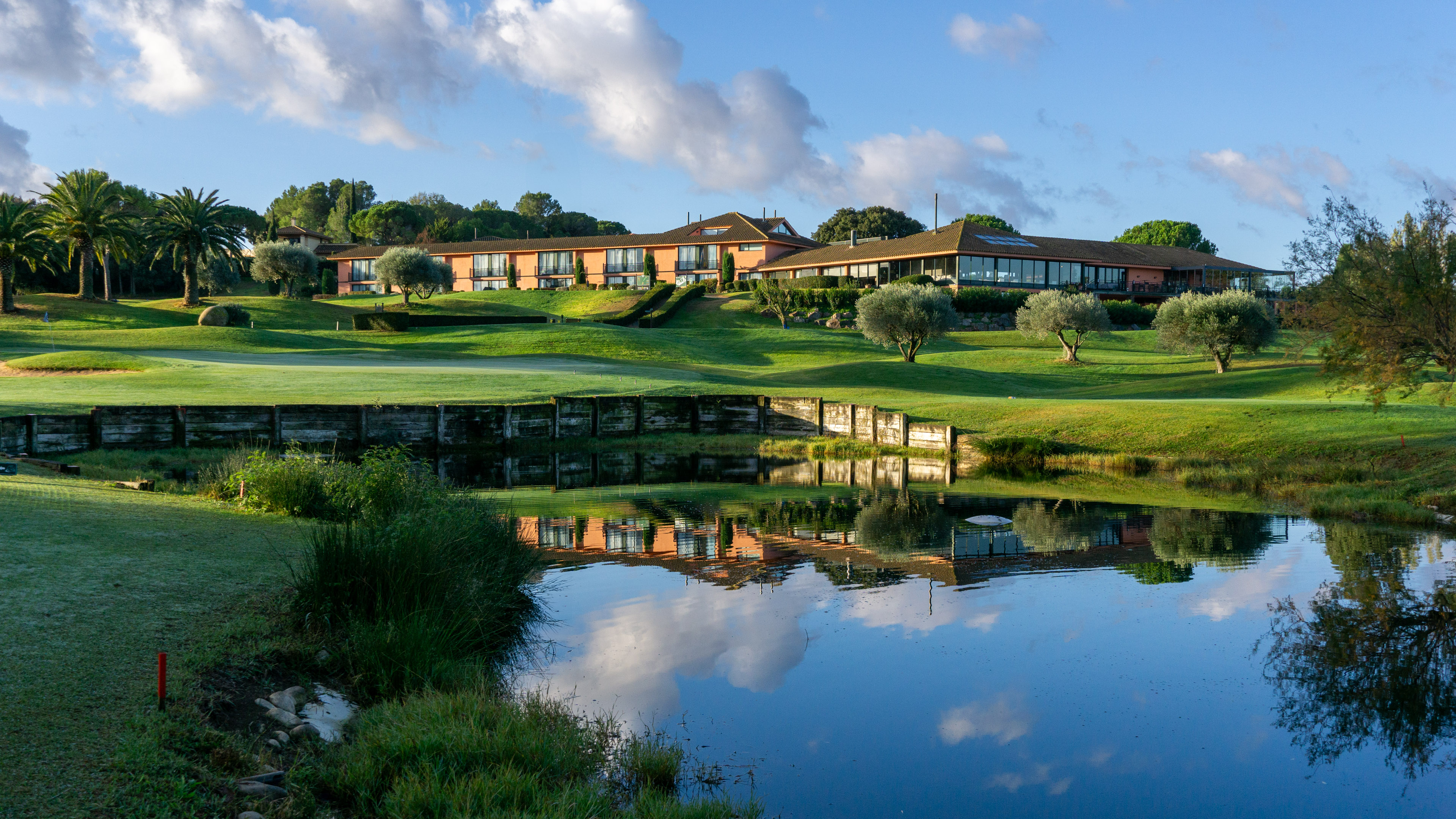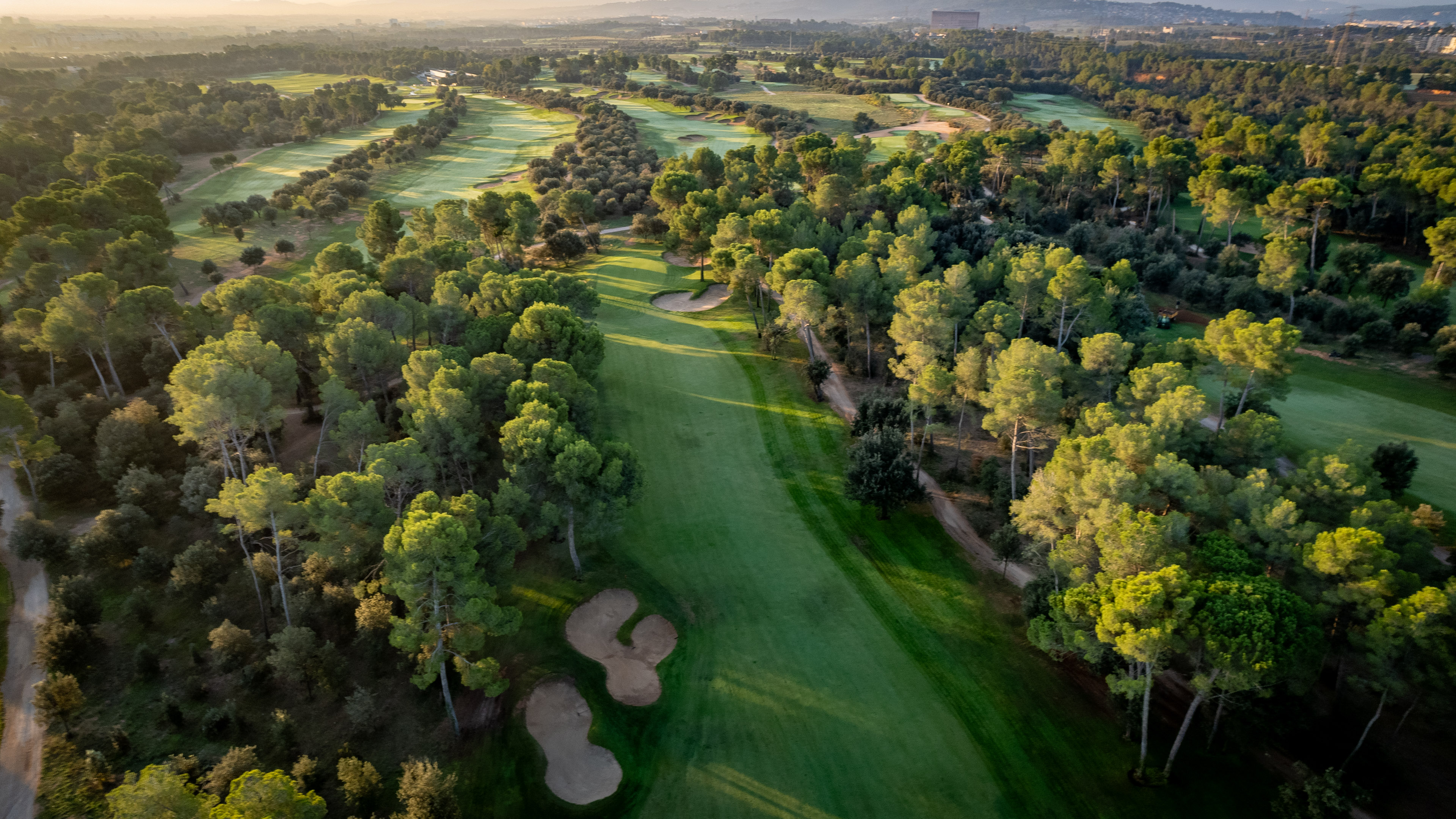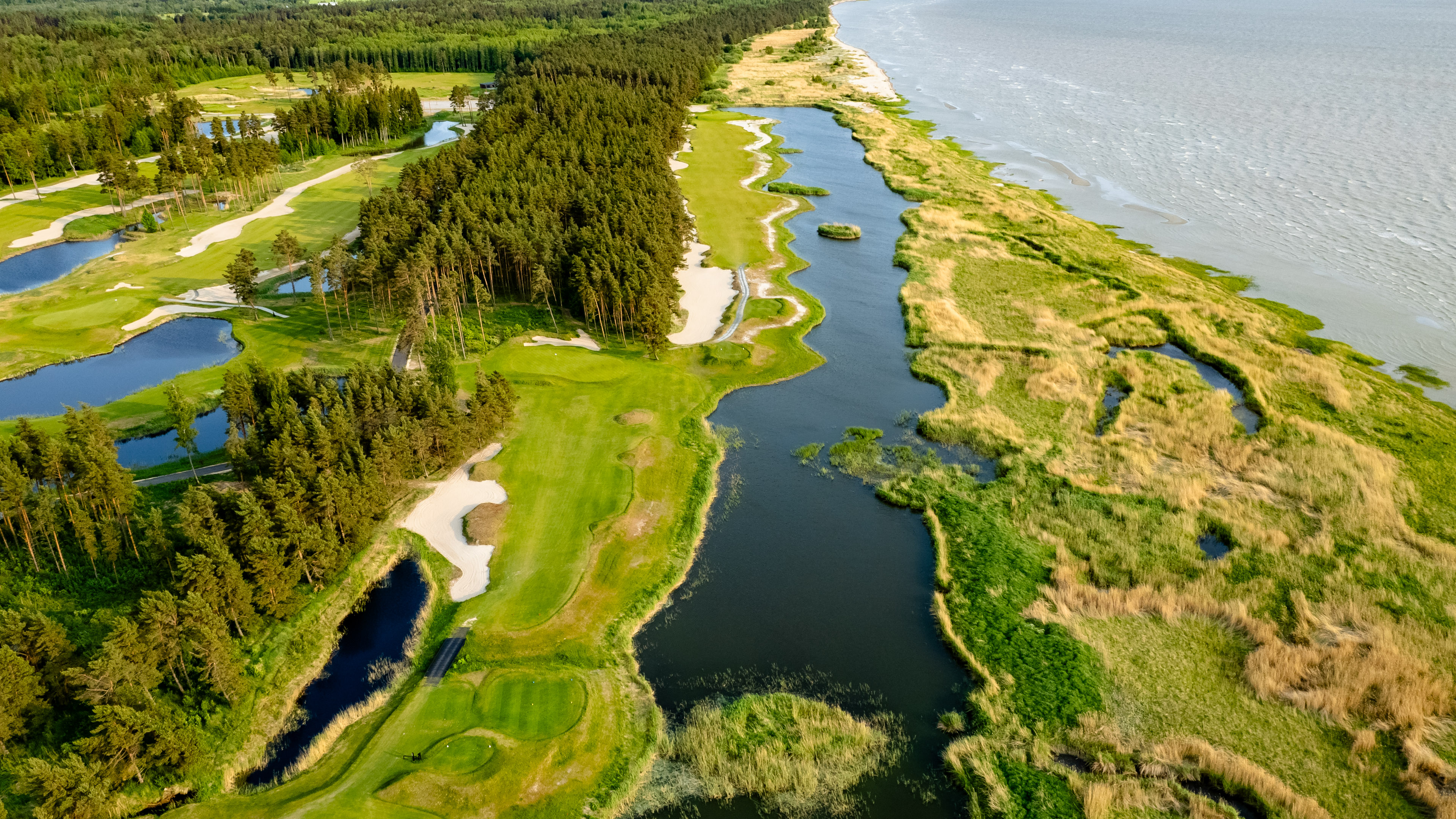Tunisia established itself as a winter golf destination in the 1990s and early 2000s, attracting many frozen European golfers. Then came the revolution and the Arab Spring. What has happened in the country after the revolution, and how has it affected Tunisia as a golf destination? We went to Tunisia to find out.
The question many asks, is it safe to travel to Tunisia after the Arab Spring? The short answer is: Yes (long answer here). Seen from the perspective of a tourist and a golf player, life in Tunisia goes on as if nothing happened. The only difference is that people now openly discuss politics, a big change from before the revolution.
Tunisia is a secular state, with several minority religions living in peaceful coexistence with the predominant muslim population. It is a common misconception that Tunisia is an Arab country, but that is not the case. It is a North African country, with a long non-Arabic history, and has much more in common with the other “Maghreb” countries of Morocco, Algeria, and Libya than it has with the countries on the Arabian Peninsula and the Middle East. It is generally seen as the most “European” of the countries in North Africa. Women are also part of the work force in greater numbers than most muslim countries. Tunisia is very safe and peaceful, probably safer than most European capitals.
Golf in Tunisia
The major golf area in Tunisia is around the Gulf of Hammamet, about an hour south of the capital Tunis. You can also find golf courses in the Tunis area, on the north coast at Tabarka, in the south on the island of Djerba, and even in the Tunisian Sahara in Tozeur.
Hammamet
Hammamet is less than an hour south of Tunis. In the Hammamet area you’ll find some of the best golf courses in Tunisia. Two of the clubs are just northwest of Hammamet, along the freeway, about a 10 minute drive from downtown.
Golf Citrus
Golf Citrus has two 18 hole championship courses, La Foret and Les Oliviers. There is also a 9 hole executive course. La Foret (the forest) is the somewhat more difficult course, while Les Oliviers (the olive trees) is a course for golfers of all skill levels. Both courses maintain a very high standard.
La Foret is a very nice mix of forest and park course. The course is in top condition, with very good greens. It is very hilly, especially the last 9 holes, so a golf car can be recommended, especially if you plan to play more than 18 holes in a single day. The course often gives you the feeling that you are the only golfer on the course. La Foret is the more difficult course at Golf Citrus, with some long tee shots over water. Not for the faint of heart.
Les Oliviers is the slightly easier course at Golf Citrus, especially the first nine holes that are fairly flat and wide, but not uninteresting. The last nine are surrounded by water, and offer more of a challenge, but are still easier than La Foret.
The club house at Golf Citrus houses an excellent restaurant and bar, and a pro shop with everything you could desire.
It is hard to find anything wrong with Golf Citrus. If you spend your golf vacation here you will most certainly be satisfied. With reservations for your own golf game, of course 🙂
Find more details about Golf Citrus here.
Yasmine GC
Yasmine GC is right across the freeway from Golf Citrus. This, too, is a first-class resort with a beautiful club house and pro shop, and plenty of practice areas.
The golf course is in very good condition. The layout is nice, but it is missing a real signature hole. The finish is a bit weak, the 17th hole is narrow and slopes heavily to the right, which makes it a bit too hard. The 18th hole is a long par 4, with a blind second shot to the green for the average golfer, both a bit too hard, and a bit dangerous.
In spite of the weak finish, this is a championship golf course, though not quite as good as Golf Citrus across the street. However, 9 extra holes are under construction, and it might catch up to Golf Citrus. We wholeheartedly recommend a round of golf at Yasmine.
Sousse – Port El Kantaoui
The next major town going south is Sousse, around a 20 minute drive south of Hammamet. Near Sousse is Port El Kantaoui and El Kantaoui Golf Course.
El Kantaoui GC
El Kantaoui GC has two courses, The Panorama Course and The Sea Course.
The Panorama Course has, as the name implies, some first class views overlooking the two courses and the nearby Port El Kantaoui. The course is well worth playing, in good condition, if not perfect. It is pretty hilly, a golf car is recommended if you plan to play more than 18 holes in a single day.
The Sea Course meanders down towards the Mediterranean, right next to the Green Park Hotel. This course is also in very good condition, but not quite perfect. Overall, it is a bit easier to play than the Panorama Course.
El Kantaoui GC may be a notch below the very best courses around Hammamet, but is definitely a fine golf club to spend your golf vacation playing. The club house serves some of the best food you can find, at very reasonable prices. The Green Park Hotel is a fine middle tier hotel, and if you stay there you can walk to the golf course and the nearby marina, which has good restaurants and shopping. Try “La Mediterranee” in the marina. You can spend the entire evening over a three course luxury dinner, and still have money for the betting on the course the next day.
Tunis area
Yet further north is the capital Tunis. Just outside town, near the coast, is The Residence Golf Club.
Residence Golf Club
The Residence Golf Club is a links style course, designed by Robert Trent Jones Jr. The course is fairly new, finished in 2008.
The Residence is a links-style course, built right next to a lake bed that fills with water from the Mediterranean part of the year. The course is very long and with plenty of water hazards. And to make it even more difficult it is almost always quite windy with a sea breeze coming in from the Mediterranean. The course has no trees to provide shelter from the wind. This makes the course quite difficult, most suited for the medium to low handicapper.
Residence has a big, modern club house with all the amenities you could ask for. Everything is five star luxury here. Surrounding the course are a number of golf villas, and across the street you find The Residence Hotel, a five star resort. The hotel has a close cooperation with the course, offering preferred tee times and green fees.
If you want a golf vacation in total luxury, choose the Residence Golf Club and hotel.
Golf around Monastir
Monastir is at the southern end of Hammamet Bay, a few minutes south of Sousse. Near Monastir there are two golf courses, Flamingo GC and Palm Links GC.
Flamingo GC is the one with a more interesting layout, starting on hole 1 with the tee high over the fairway, a dogleg into a raised green. Hole 8 is also an interesting hole, a dogleg around a ravine, with the possibility of saving a stroke if you shortcut over the ravine. A few too many holes have blind tee shots, but if you play several rounds on the same course you will get the hang of it, and the course could be quite interesting. With the course laid out on a hill high over the surrounding landscape, you get many beautiful views, but at the same time, the wind can be quite challenging.
The course went through a significant upgrade and renovation in 2013, including a brand new luxury club house with a fine restaurant, and it is now much better than it once was. Not quite of the same class as the courses around Hammamet, but well worth a visit if you have an extra day in your schedule.
Palm Links GC, near Sousse, has also recently been upgraded, but is a bit flat and boring and not in very good shape. A few holes run along the Mediterranean, and here it gets a bit more exciting, but to play Palm Links for an entire week long golf vacation will probably be a bit tedious.
Sights and excursions
There’s a lot to see in Tunisia. If you are serious about seeing more of the country than just the golf courses, you should of course get a guide book. Here we will just mention a couple of the most notable sights.
Carthage
Carthage was the home of a powerful trading empire in Roman times. At the height of its power, it had half a million inhabitants. You have probably heard the phrase “Carthage must be destroyed”, which is how the Roman statesman Cato the Elder ended many of his speeches.
Eventually the Romans prevailed, and not much remains of Carthage today. But if you’re at all interested in history, the ruins are a must see.
Sidi Bou Said
Sidi Bou Said is located not far from Carthage on the coast east of Tunis. The town is an artist town, almost exclusively colored blue and white, and draped with flowers. It is built on a high cliff overlooking the coastline, offering stunning views. Try to visit in the late afternoon, and enjoy the sunset at the café located at the very top.
Both Carthage and Sidi Bou Said are easily reached from Hammamet in less than an hour.
Shopping
No trip to Tunisia is complete without a visit to a Medina. Every major town has its own Medina, filled with shops where you can find bargains on almost anything.
In the Medina, you have to bargain. Prices first quoted are sometimes many times higher than what you eventually settle for. It is essential to decide upfront how much a particular item is worth to you, and walk away early if you make no progress. Keep in mind that if the seller agrees on the price you suggest, it would be very rude to then back away and not buy the item.
If you are uncomfortable with bargaining, most Medinas have a “Prix Fixe”, a store where the prices are fixed and non-negotiable. If you have never been to a Medina before, it can be a good idea to visit a prix fixe first, just to get an idea of the general price level for the type of goods you are looking for. Or simply do your shopping there. Also remember to keep things in perspective, even if you don’t get the absolute maximum bargain, prices are mostly much lower than what you would pay at home.
All that being said, don’t let the process frighten you. Shopping in the Medina can be very entertaining, and real bargains can be had. A bracelet with an inscription? 35 dinars. Offer 4. You might get it for 7. Genuine silver J. A nice leather ottoman pillow. 10 dinars, before you even bargain. Leather in general is a good bargain. You can get a tailored leather jacket for 150-200 dinars (one Tunisian Dinar is around 0.50 euro).
Take your time, don’t get irritated at the sales tactics. Be friendly, and the negotiations will go smoothly, and you can part as friends. The shopkeeper will respect you if you are a good and friendly negotiator, even if you don’t end up buying anything.
You can get a nice “Rolex” watch for 30 dinars.
“Made in Dubai” claims the shopkeeper. Apparently all well-made Rolex copies come from Dubai. Just examine the watch carefully, and make sure it actually works.
“The watch band is made of real leather”, he continues. This is a clue. The watch band is one of the most expensive parts of the watch, an indication that this is probably not a watch you will wear for the rest of your life. But have some fun, live a little. The watch looks real, keeps time, and will probably impress your golf buddies back home. Who knows, it might even come in handy during some betting.
Food and restaurants
If you’ve come to Tunisia on a package trip, chances are you have half board or even all-inclusive. While the food in the hotel restaurant buffet is generally quite good, you really should try some “real” Tunisian food.
A good way to start your Tunisian food exploration is to order in a selection of appetizers before your lunch at the golf club. This will get you started, and you can then venture out for dinner at one of the many restaurants. Below are some recommendations.
For some help in understanding the menus, see “What’s on the menu”
Hammamet
- Restaurant La Terrasse, Zone Tourisitque Nord, Hammamet (seafood, international and French)
- Restaurant Barberousse, Ville Arabe , Hammamet (seafood and Mediterranean)
- Restaurant La Bouillabaisse, La Marina, Yasmine, Hammamet (seafood, international cuisine)
- Restaurant Chez Achour, Avenue Ali Belhwene, Hammamet (seafood and Tunisian cuisine)
- Restaurant Le Voilier, Marina Yasmine, Hammamet (seafood, international and Mediterranean cuisine)
Sousse & Port El Kantaoui
- Restaurant Le Méditerranée, Port El Kantaoui (Tunisian, international, and seafood)
- Restaurant La Daurade. El Kantaoui, Port El Kantaoui (French, seafood, and grill)
- Restaurant Le Baron, Av. Taieb M’hiri, Sousse (International, French, and seafood)
- Restaurant Le couscous, Port El Kantaoui, Les Maisons de la Mer (Tunisian and Mediterranean cuisine)
Tunis & Sidi Bou-Saïd
- Restaurant Le Grand Bleu, Av. Taieb M’Hiri , Gammarth (seafood, international and Tunisian cuisine)
- Restaurant Le Pirate, Port de Sidi Bou Said (Tunisian, Mediterranean, and seafood)
- Restaurant Dar Zarrouk, Rue El Arbi Zarouk, Sidi Bou Said (Tunisian, Mediterranean, and seafood)
- Restaurant Au Bon Vieux Temps, 56 rue Hedi Zarrouk, Sidi Bou Said (Tunisian, seafood, and grill)
- Restaurant Dar El Jeld, 5, Rue Dar El Jeld, Tunis (Tunisian cuisine)
Golf in the Sahara
We landed late in the evening, and were met by a light rain. “First rain this year”, our driver said cheerfully. It was the 14th of April, and the rain was very welcome.
We were in Tozeur in south-western Tunisia. Tozeur is a desert town, an oasis with over 400,000 date palms. And a golf course. That’s why we were here.
The next morning there were no traces of the rain. The sun was shining, and it looked like a perfect day for golf. We left for the golf course, about 5 minutes by car from the tourist area where most hotels are located.
Golf Oasis
At 10 in the morning, we were the first golfers to arrive for the day. There were no clouds in the sky, so I had the Caddiemaster store my umbrella to lighten the load.
The course has an interesting layout, hillier than you might first imagine when you think about a desert course. Straight across the first nine holes runs a ravine that looks like something out of a Star Wars movie. Not surprising, really, scenes from the movies were filmed in the desert not far from here. There are also a number of holes with water hazards, that too something you might not expect in the desert.
From the golf course you have a nice view of the big salt lake, Chott el-Djerid. The lake is nowadays mostly dry, but it is believed to once have been a part of the Mediterranean. If you look out over the lake at the horizon there appears to be some water, but it is really just a mirage. Just like the birdie I thought I saw.
The course holds a lot of promise. It is very suitable for the average golfer. Unfortunately, it is not in very good condition yet. The grass is a little spotty with sand in between, and the greens are a bit uneven.
The Green-keeper looked worried when we asked about the grass.
“It is often very hot, over 50C (122F) in the summer, and in the winter it can get down to freezing temperatures. It is very difficult to find a grass mix that can stand both extremes”.
The grass type used right now is most dense and green in the summer. But then it is too hot for most people to play. In spite of this, the Greenkeeper was optimistic about the future of the course. He will continue experimenting by over-seeding different types of grass in the fall. If he succeeds, the course will be a top-class course. It is already quite an experience to play, as long as you understand the problem with the grass. Given that, you would be well-advised to check current conditions before scheduling a trip to Tozeur.
After a well-prepared lunch in the clubhouse, it was time to leave. But my umbrella was nowhere to be found. The Caddiemaster was very apologetic and offered me a brand new umbrella in exchange. I am now the proud owner of an umbrella from the Sahara!
Tozeur
Apart from golf there is a lot to see and do in Tozeur. The tourist industry has become more important than the traditional date growing, for good and bad. But there are still more than 400,000 date palms. A visit to one of the farms can be very interesting.
We ran into Ali, one of the workers at the date oasis. His father had been worker at a date farm, as well as his grandfather, and this was also Ali’s plan in life. Ali showed how you easily can climb, or, in his case, run up a date palm. Harvest time is in November, but Ali lives in the oasis, and works with maintenance year-round together with his brother. The reward is 25% of the profits. The rest of the profit goes to the owner. A good life? – Ali seemed to have found his calling.
Not to be missed in Tozeur is the medina, the old town, where you can find traditional architecture with a soft type of brick unique to the Sahara. Of course, there is also plenty of shopping opportunities, with lower and lower prices the more you bargain. And you must bargain. The price will often end up at a fifth of the asking price.
From Tozeur you can also go on a desert safari. Everything from a day trip, to longer excursions where you overnight in tents in the Sahara. You can travel by camel or by SUV. Your choice.
Even more courses
In addition to the courses already mentioned, there are a few more in Tunisia. Up north, on the Mediterranean coast, is Tabarka, a nice course in a forest setting. And on the southern tourist island of Djerba there is a 27 hole course. We will cover these courses in a future issue of Golf Travel Journal.
Also keep an eye out for our upcoming Golf Guide to Tunisia.
The only democracy
So what has happened to Tunisia after the Arab Spring? First of all, the Arab Spring was nearly bloodless in Tunisia. Yes, there were big demonstrations and a lot of suppressed anger and miscontent surfaced, but all in all it was fairly peaceful. Open elections followed, and the Ennahda islamist party won in what was viewed as a fair election. However, they won largely because they were the best organized in a disarray of political parties, not because they had the support of the majority of the population. Tunisia is a fairly secular state, with large religious minorities peacefully coexisting with the majority muslim population, and the islamists are a minority.
Without the support of the majority of people, the Ennahda regime was largely ineffective. While people were now free to express their opinion openly, and they did, this did not put more food on the table. The economy was idling, and nothing really happened to improve people’s everyday life. Investments slowed because of political and economic uncertainty. So something had to change.
Just recently a compromise was reached with the opposition, and a caretaker administration with leaders from both the ruling party and the opposition was put in place to run the country until the next election. Tunisia again has the chance to be a leader in showing the Arab world how to peacefully resolve political stalemate. Something well worth supporting.
Update: The Tunisian parliament has approved a new constitution, widely regarded as the most democratic in the area. The new constitution includes freedom of religion (including atheism), equal rights for women, and prohibits actions to encourage violence. It also includes the right to a fair trial for everyone, and prohibits torture. The constitution is a historic compromise, and could serve as a model for other countries in the region.
Getting there
The first choice you have to make when planning a golf vacation is whether to buy a package golf trip or book everything yourself. In the case of Tunisia, the best alternative is almost always a package trip, since there are no low-cost airlines flying into the country. Your only low-cost choice is a charter flight that is part of a golf package. Another good reason to choose a package is the significant discounts on green fees that the operators negotiate.
Three important airports for travelers to Tunisia:
Tunis-Carthage:
Tunis Airport is Tunisias main airport, served by major international air carriers. This is the airport you most likely will arrive at if you are on a scheduled flight to Tunis, or if you have domestic connections. Major airlines serving Tunis include:
Tunis Air, Air France, Lufthansa, Alitalia, Turkish, all major Arab airlines
Enfidha – Hammamet:
Enfida Airport opened in 2009, and is the main “tourist” airport for tour operators serving the resorts in the Hammamet Bay area. This is the airport you most likely will arrive at if you are on a package vacation. Major airlines serving Enfidha, some seasonal, are:
Air Berlin, Monarch, Nouvelair, SAS, Thomas Cook, Thomson, Transavia, Transaero, Tunisair
Monastir – Habib Bourguiba:
Monastir used to be the main tourist airport, but has largely been replaced by Enfidha. Some charter carriers still fly there, like:
Nouvelair, Transavia, Air Mediterranee
Other important international airports are Tabarka and Djerba.
Getting around:
Taxis are VERY inexpensive in Tunisia. It is quite possible to go long distances by taxi without spending a fortune. A short taxi ride can cost as little as a euro, and a trip from Hammamet to Tunis, which takes about an hour, would typically be less than 20 euro. Even a trip across most of Tunisia, the 400 km 5.5 hour trip from Hammemet to Tozeur in Tunisian Sahara, would only set you back around 100 euro.
The best way to get a taxi is to hail one on the street. Sometimes taxis parked outside hotels can be more expensive. Always insist on a metered ride, it is the law in Tunisia. If the driver offers a fixed price, turn him down and insist on the meter. If you have a bunch of golf bags with you, expect to pay a small extra fee. More taxi advice here: Tripadvisor: Taxis in Tunisia
You can also take a train from the Hammamet area to Tunis, but you would do this more for the enjoyment of the ride than to save money or time.
What’s on the menu?
Here is a short dictionary to help you order some real Tunisian food.
Shorba Frik – lamb soup
Coucha – shoulder of lamb cooked with turmeric and cayenne pepper
Khobz Tabouna – (pronounce Khobz Taboona) traditional oven baked bread
Brik – very crispy thin pastry with a whole egg (Brik à l’oeuf), parsley and onions and perhaps, meat too e.g. minced lamb or tuna (Brik au thon). Very tasty as an inexpensive starter. Eat it very carefully with your fingers.
Berber Lamb – Lamb cooked with potatoes, carrots in a clay pot.
Merguez – small spicy sausages.
Salade Tunisienne – lettuce, green pepper, tomato, onions, olives, radishes mixed with tuna.
Tunisian cakes – sweets related to Baklava.
Harissa – very hot spicy chili paste (sometimes made more mild with carrots or yogurt), served with bread as a starter at almost any meal.
Fricasse – small fried sandwich with tuna, harissa, olives and olive oil.
Bambaloony – fried sweet donut-like cake served with sugar.


